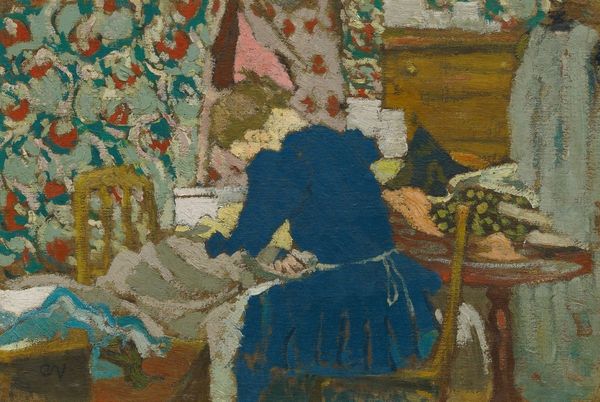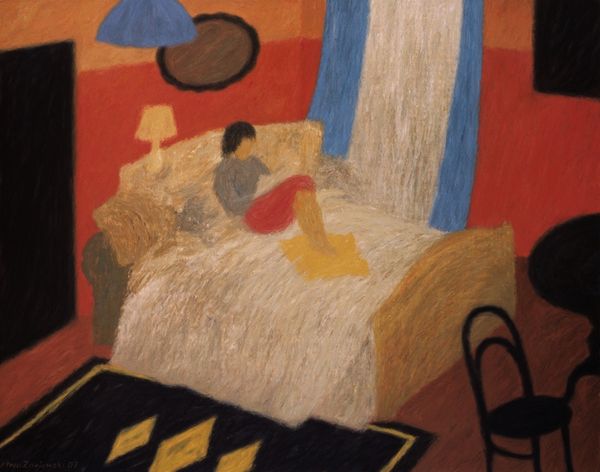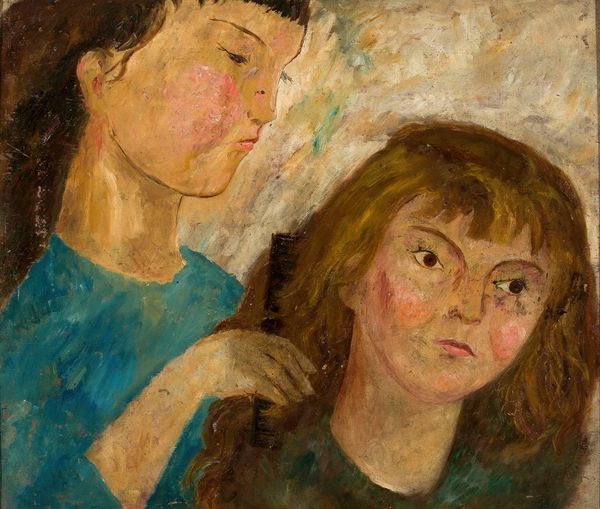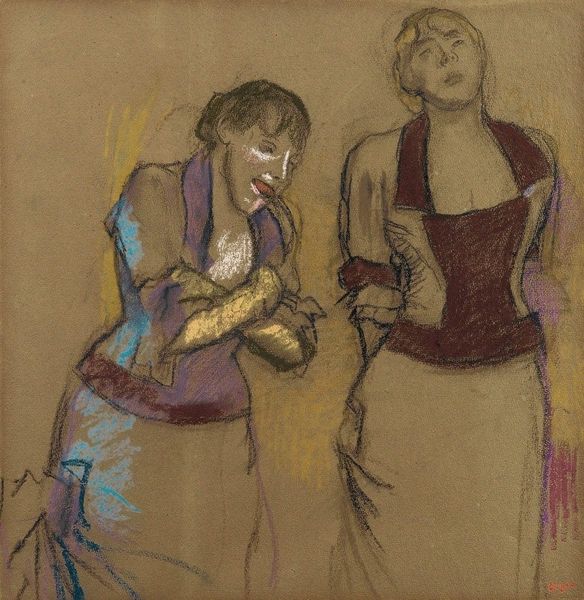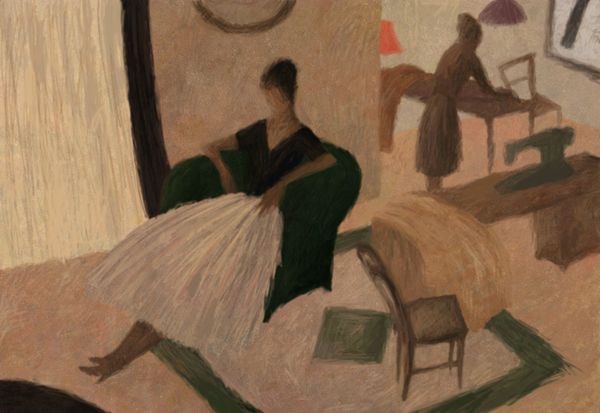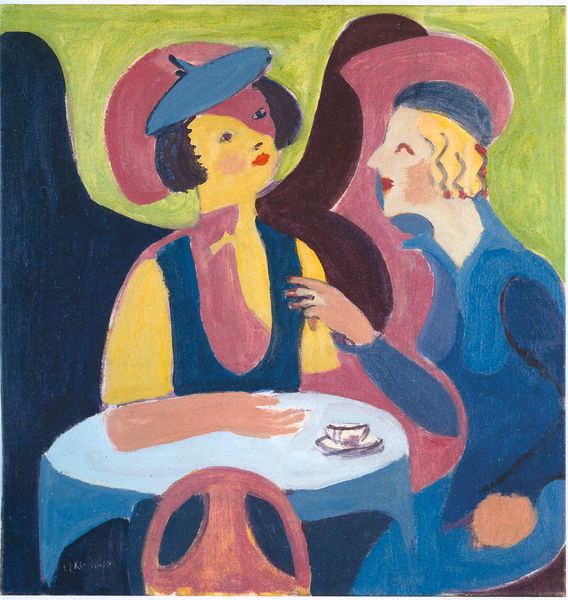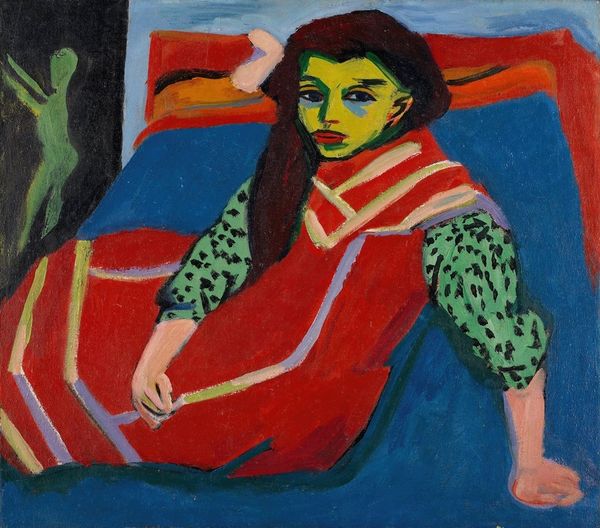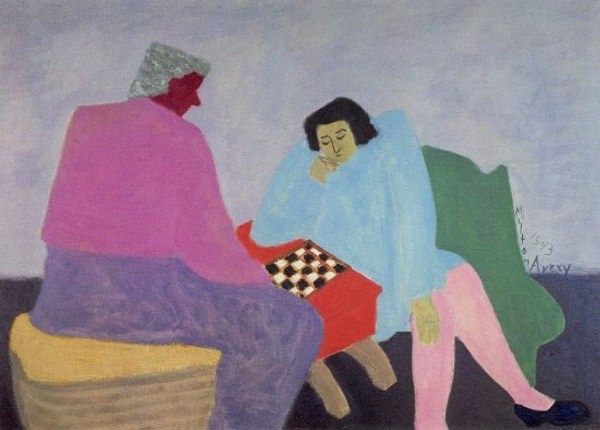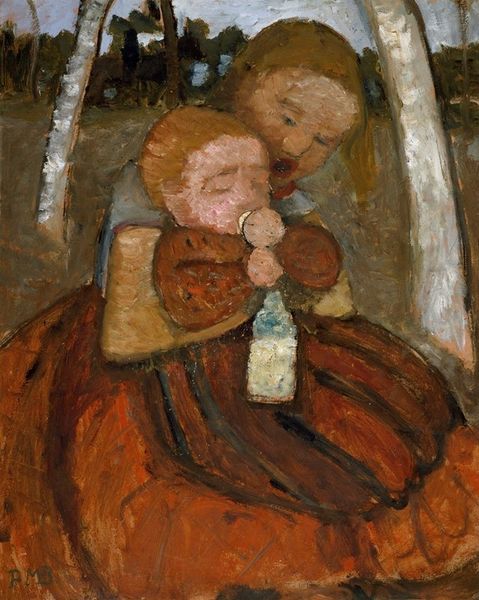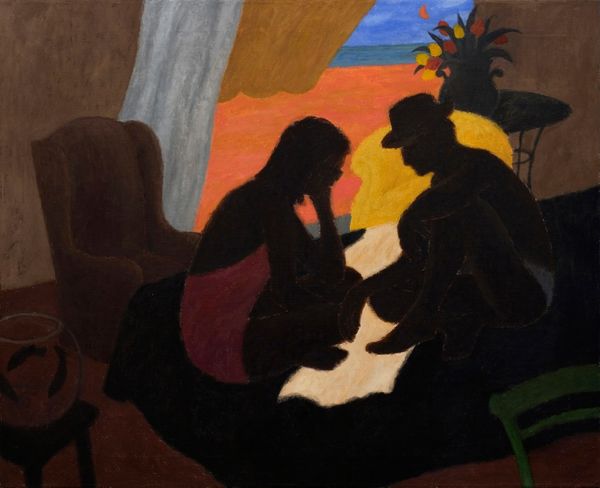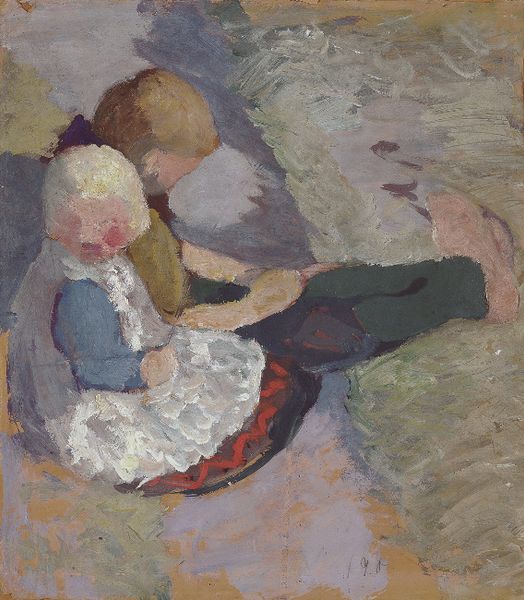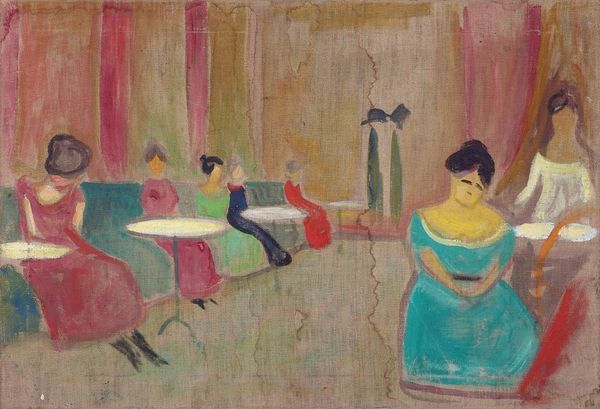
painting, oil-paint, impasto
figurative
painting
oil-paint
figuration
oil painting
impasto
intimism
les-nabis
genre-painting
modernism
Copyright: Public Domain: Artvee
Editor: Here we have Édouard Vuillard's "Les Couturières," painted in 1890 with oil paint. It shows two women focused intently on their sewing. There's a lovely, quiet feeling about it. What strikes you about its composition? Curator: Note how Vuillard flattened the pictorial space. The planes of color—the emerald background, the fiery red fabric—operate almost independently, asserting their material presence on the canvas. It becomes less about representing "couturières" and more about the interplay of form and color. Editor: So you are seeing it as the formal elements taking priority over the subject matter? Curator: Precisely. The composition teeters intriguingly on the edge of abstraction, yet is anchored by the recognizable figures. Consider, too, Vuillard’s application of paint, those short, deliberate strokes. Does that imply a certain tension or restlessness beneath the serene surface? Editor: I can see that now. It’s like he’s building the forms with daubs of color. Almost like a mosaic, fragmenting then reassembling what we are looking at. What is he telling us? Curator: The beauty resides in the structure. Color dictates emotion. Juxtaposition dictates depth. Consider also the non-blending; that makes us actively assemble a likeness of the observed within our perception, as opposed to being presented with a seamless illusion. This approach encourages a heightened awareness of the medium itself. Editor: This has made me appreciate the structure, not just the domestic scene that Vuillard presents. Thank you! Curator: The pleasure, indeed, is in how that initial representation gives way to something far more structurally fascinating.
Comments
No comments
Be the first to comment and join the conversation on the ultimate creative platform.
